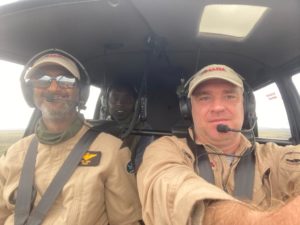 In the second quarter, the Kenyan government launched the National Wildlife Census 2021, a part of the country’s wider strategy to protect and conserve the wildlife in Kenya. Alongside their partners, Kenya Wildlife Service (KWS) and the Wildlife Research and Training Institute, they are counting all wildlife across the country using GPS trackers, aircraft, camera traps and patrols. The data collected from the census will help paint a detailed picture for the Kenyan government and conservation organizations like Mara Elephant Project of how wildlife use their ever-shrinking space and get a better understanding of the threats they face like habitat loss, conflict and climate change. Dr. Patrick Omondi, the director of biodiversity, research and planning at KWS alongside a large team of conservationists in Kenya are conducting the count. In May, I had the pleasure of joining Riz Jiwa and Conservation Officer Wilson Sairowua (pictured above) in the MEP leased helicopter to contribute to the aerial census.
In the second quarter, the Kenyan government launched the National Wildlife Census 2021, a part of the country’s wider strategy to protect and conserve the wildlife in Kenya. Alongside their partners, Kenya Wildlife Service (KWS) and the Wildlife Research and Training Institute, they are counting all wildlife across the country using GPS trackers, aircraft, camera traps and patrols. The data collected from the census will help paint a detailed picture for the Kenyan government and conservation organizations like Mara Elephant Project of how wildlife use their ever-shrinking space and get a better understanding of the threats they face like habitat loss, conflict and climate change. Dr. Patrick Omondi, the director of biodiversity, research and planning at KWS alongside a large team of conservationists in Kenya are conducting the count. In May, I had the pleasure of joining Riz Jiwa and Conservation Officer Wilson Sairowua (pictured above) in the MEP leased helicopter to contribute to the aerial census.
On June 16, there was an elephant treatment that truly highlighted the team effort our organization can now put into protecting the wildlife, communities and habitat of the Maasai Mara. The elephant treatment, while routine, highlighted our rangers, long-term monitoring (LTM) team, helicopter and brought everyone together to work alongside our partners to save this elephant. We originally received the call from Oloisukut rangers that they spotted a bull elephant with an injury on his front right leg. MEP then deployed the “Alpha” team stationed in Nyakweri to find the elephant and document his wounds so KWS Vet Dr. Limo could be called. Once on the ground, they noted that he was limping and moving very slowly as he was crossing the Mara River.
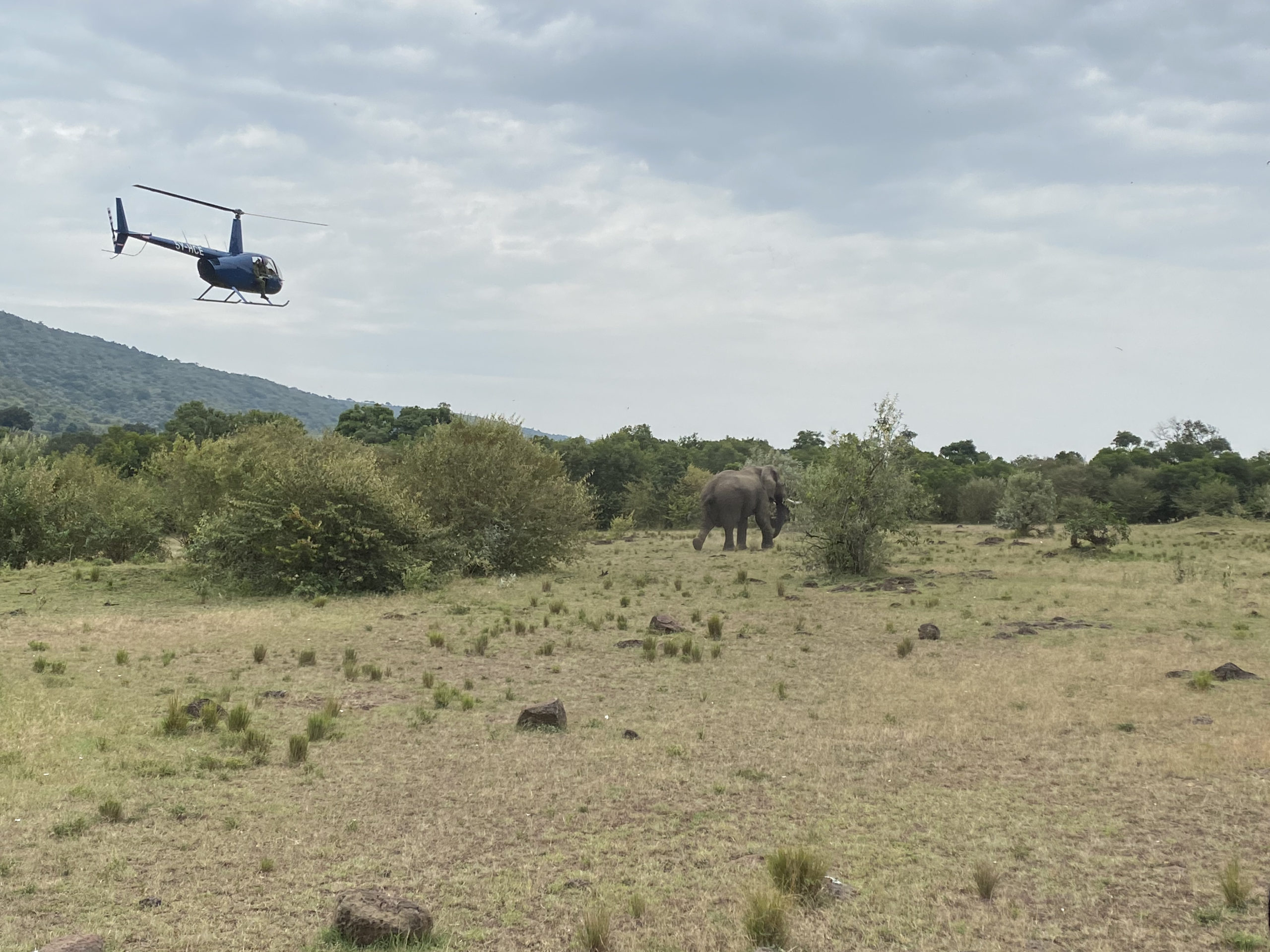 The MEP leased helicopter was sent to retrieve Dr. Limo, herded the elephant out of a patch of forest and assisted with darting the elephant from the air so he could be treated.
The MEP leased helicopter was sent to retrieve Dr. Limo, herded the elephant out of a patch of forest and assisted with darting the elephant from the air so he could be treated.
Once down, Dr. Limo alongside his Sheldrick Wildlife Trust (SWT) Mara Mobile Vet Unit team members got to work and removed two arrowheads and treated one spear wound on the elephant. The MEP LTM team were on the ground to assist with the treatment alongside the Alpha ranger team. They noted that this bull elephant was identified as elephant ID 58 and was officially identified on April 22 and then photographed again on May 13 where one of his wounds was noted. This bull had clearly been in conflict with the nearby community bordering the conservancy and was shot with arrows while raiding farms. The treatment was successful and all of the elephant’s wounds were cleaned out, disinfected and patched up; it was truly a team effort.
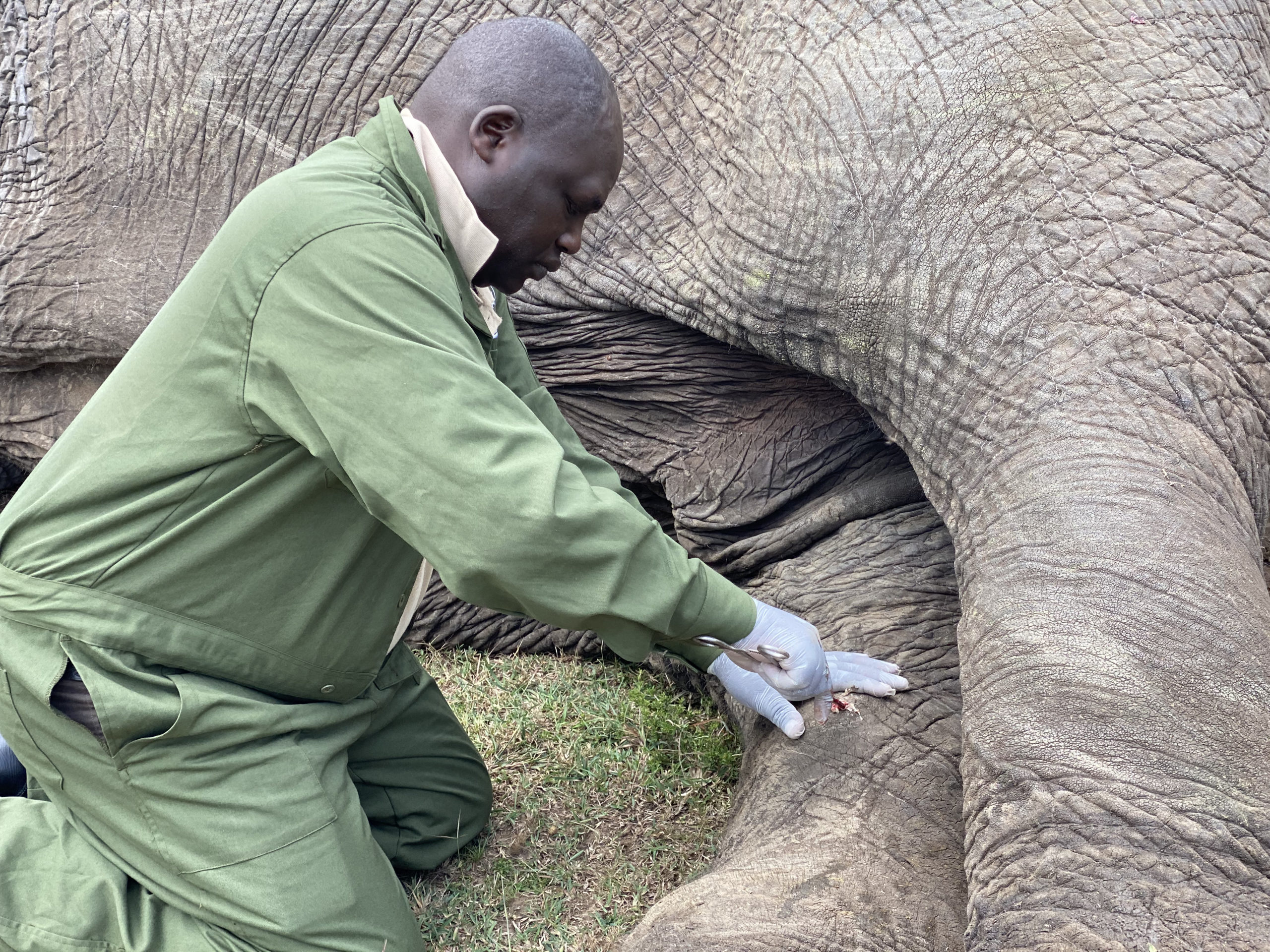
Dr. Limo at work.
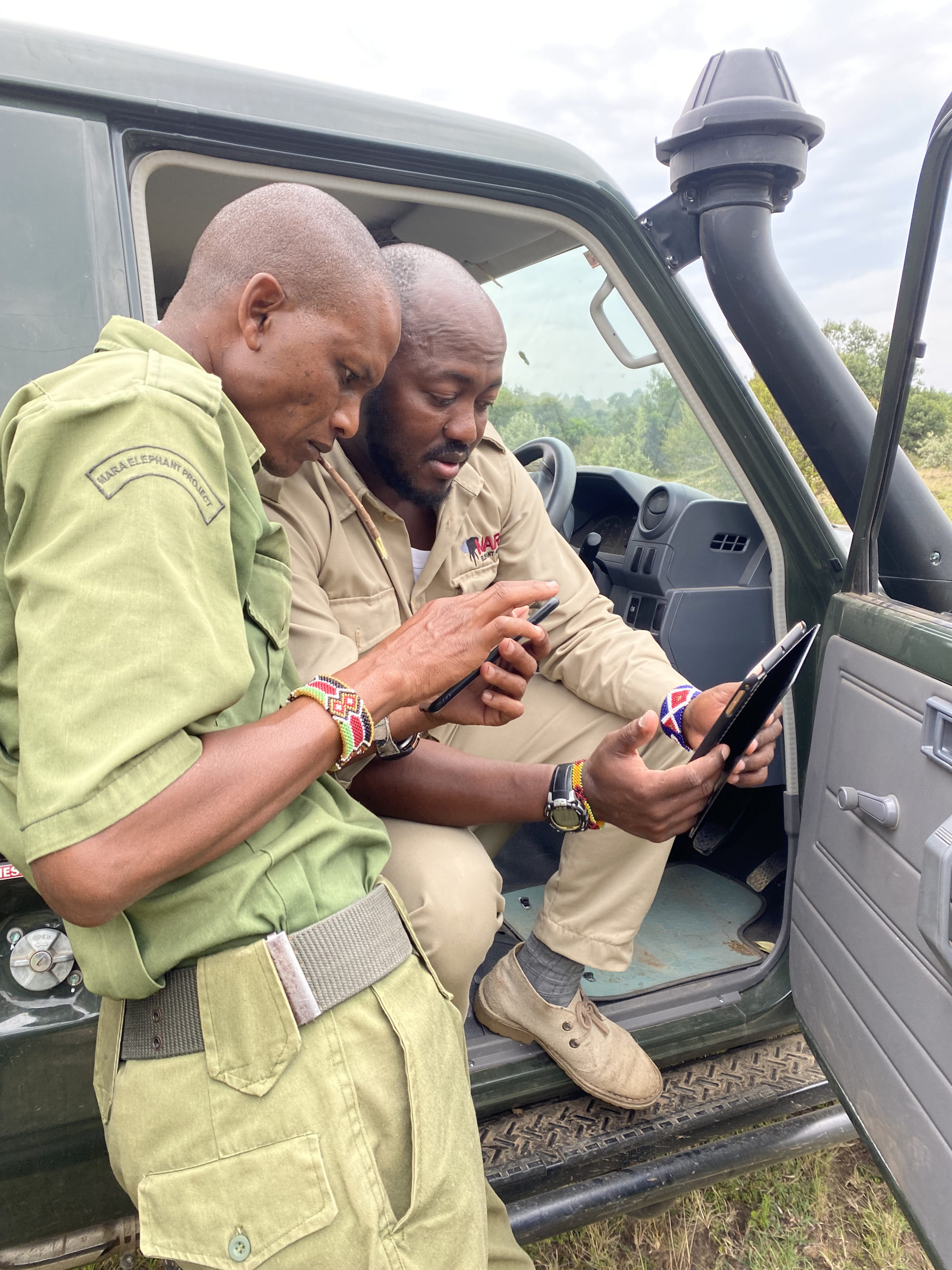
MEP ranger and LTM team leader coming up with the plan for the treatment operation.

One of the arrowheads pulled out of the bull.
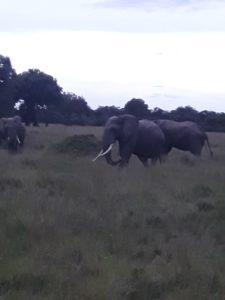 The MEP leased helicopter was used in a conflict incident on April 22 to assist MEP rangers on the ground with moving a herd of elephants out of the Ilkirin area near Loita (pictured left). The rangers were pushing this heard away from farms and homes for two days in thick bush, but they ran out of firecrackers and were not making up enough ground. Once the helicopter was there to assist the team from the air, the elephants were safely moved away from community land and rangers were tasked with keeping a close eye on them and ensuring the community was safe.
The MEP leased helicopter was used in a conflict incident on April 22 to assist MEP rangers on the ground with moving a herd of elephants out of the Ilkirin area near Loita (pictured left). The rangers were pushing this heard away from farms and homes for two days in thick bush, but they ran out of firecrackers and were not making up enough ground. Once the helicopter was there to assist the team from the air, the elephants were safely moved away from community land and rangers were tasked with keeping a close eye on them and ensuring the community was safe.
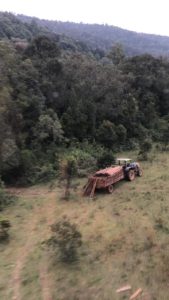 In late June, the helicopter was used to conduct an aerial patrol of the Mau Forest and relay coordinates of commercial logging and charcoal making sites to the ground teams for follow up in July (pictured right). MEP’s leased helicopter is truly a versatile and key piece of the MEP toolbox to help combat the rise in conflict, bushmeat poaching and illegal habitat destruction we’re experiencing in the GME.
In late June, the helicopter was used to conduct an aerial patrol of the Mau Forest and relay coordinates of commercial logging and charcoal making sites to the ground teams for follow up in July (pictured right). MEP’s leased helicopter is truly a versatile and key piece of the MEP toolbox to help combat the rise in conflict, bushmeat poaching and illegal habitat destruction we’re experiencing in the GME.
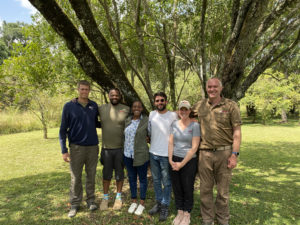 Finally, on June 13, MEP Trustees Kevin Rodrigues, Trey Fehsenfeld and Beatrice Karanja joined other core staff members on MEP’s campus to meet in person and receive recent updates on MEP’s ranger operations and research. It was exciting as almost the whole core team was able to gather for the first time since the pandemic in the Maasai Mara (pictured left).
Finally, on June 13, MEP Trustees Kevin Rodrigues, Trey Fehsenfeld and Beatrice Karanja joined other core staff members on MEP’s campus to meet in person and receive recent updates on MEP’s ranger operations and research. It was exciting as almost the whole core team was able to gather for the first time since the pandemic in the Maasai Mara (pictured left).


